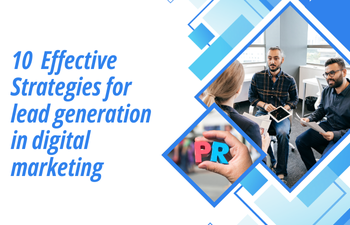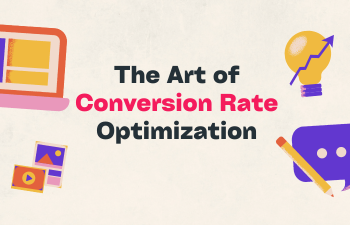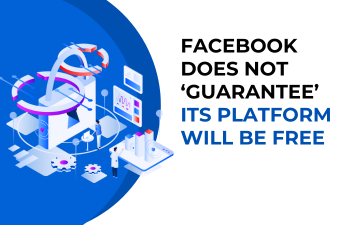 Digital Marketing
Digital Marketing
10 Effective Strategies for Lead Generation in Digital Marketing”
Introduction: In this blog post, we will delve into the world of lead generation in digital marketing and explore ten proven strategies that can help businesses generate high-quality leads. From optimizing your website for search engines to leveraging social media platforms and implementing effective email marketing tactics, we will provide actionable insights and tips to boost your lead generation efforts. By incorporating these strategies into your digital marketing plan, you can attract, nurture, and convert leads into loyal customers.
What is a Lead?
A lead is a potential customer or an individual who has expressed interest in a company’s products or services in the context of marketing. A lead is someone who has submitted their contact information, such as their name, email address, phone number, or any other pertinent information, signaling their readiness to engage with the business further.
Leads are critical for organizations because they represent prospective sales and conversions. Companies can create relationships with prospects, nurture them through the sales funnel, and eventually convert them into paying customers by acquiring leads.
Essential applications for leads
Opportunities for Sales
Relationship Development Lead Nurturing
Insights into Marketing
Segmenting Customers
Monitoring Return on Investment (ROI)
Overall, leads are critical to driving corporate growth and revenue. Businesses may extend their client base, generate sales, and develop long-term customer connections by efficiently gathering, nurturing, and converting leads.

How to Generate Leads using Social Media?
Social media networks provide several options for your business to create leads. Here are some social media lead generation strategies:
Optimize Your Social Media Profiles: Make sure your social media profiles are thorough, professional, and reflect the identity of your brand. Include connections to your website or landing pages where readers can learn more and convert into leads, as well as high-quality photographs and intriguing descriptions.
Create Engaging Content: Create quality and relevant content for your target audience. To catch attention and drive engagement, use a variety of forms such as photos, videos, info graphics, and blog articles. Make your material shareable and include clear calls-to-action (CTAs) to entice users to do the desired action.
Run Contests and Giveaways: Hold contests or giveaways in which participants must disclose their contact information in exchange for entry. To generate interest and encourage sharing, promote these campaigns on your social media networks. To attract qualified leads, the award should be relevant to your target demographic.
Use Paid Advertising: To reach your target audience, use the targeting features of social media advertising platforms. Create targeted ad campaigns using platforms like Facebook Ads, Instagram Ads, LinkedIn Ads, or Twitter Ads. Create enticing ad language and visuals that encourage consumers to click and offer their information.
Use Lead Generation Forms: Many social media sites include lead generation form choices, allowing you to collect user information directly within the platform. Customize the form fields to capture the information you require, and use an intriguing offer or incentive to entice people to complete the form.
Host Live Webinars or Q&A Sessions: Use social media channels to host live webinars or question-and-answer sessions. Promote the event in advance, and urge participants to ask questions or submit contact information for follow-up during the session. This interaction aids in the development of relationships and the establishment of your expertise.
Respond to Comments, Messages, and Mentions: Actively engage with your social media audience by replying to comments, messages, and mentions. Answer questions, provide knowledge, and participate in discussions. Through interaction, you may build relationships and generate trust, which can lead to greater lead production.
Collaboration with Influencers: Collaborate with influencers or industry leaders in your expertise who have a large social media following. They can advertise your items or services to their target demographic and direct them to your website or landing pages. This relationship has the potential to broaden your reach and produce qualified leads.
Monitoring social media conversations linked to your industry, brand, or relevant keywords. Identify individuals who have expressed an interest in or are looking for solutions linked to your offers. Engage them by giving them useful information, addressing their queries, and offering your expertise. This can lead to opportunities for lead creation.
Track and Analyze Results:Analyze your social media efforts on a regular basis utilizing analytics tools given by platforms or third-party applications. Keep track of analytics like engagement, click-through rates, and conversions. Determine which methods and content are producing the most leads and modify your strategy accordingly.
Remember that consistency and a well-planned social media approach are essential for lead generating success. Tailor your strategy to each social media site and constantly fine-tune your techniques based on the data you collect.
What are the types of leads in Digital Marketing?
Leads in digital marketing can be categorized based on their source or technique of generation.
The following are some examples of frequent sorts of leads in digital marketing:
Organic leads are those obtained through unpaid, natural sources such as search engine results. When someone discovers your website or landing page via organic search results, their interest in your product or service converts them into a prospective lead.
Paid leads are obtained through advertising campaigns in which you pay for placement or promotion. Pay-per-click (PPC) commercials, display ads, social media ads, and sponsored content are some examples. These leads are often directed to a dedicated landing page or lead capture form.
Referral Leads: Referral leads are generated by existing customers or contacts’ recommendations or referrals. When someone suggests your company or provides a link to your website, the resultant traffic and leads are referred leads.
Leads generated through social media platforms are referred to as social media leads. They can result from a variety of activities, including responding to your social media postings, clicking on call-to-action buttons, completing lead forms, or sending direct messages expressing interest.
Email Marketing Leads: This category includes leads obtained through email marketing initiatives. These leads are often gained through newsletter sign-ups, lead magnets, or gated content, in which consumers exchange their contact information for useful content.
Leads from Webinars/Events: When people sign up for webinars, online events, or conferences, they become leads. These leads reflect a specific interest in the event’s topic or industry and can be fostered further through follow-up communication.
Leads from material Marketing: Content marketing entails developing and sharing valuable material in order to attract and engage an audience. When people consume your content, such as downloading an eBook, accessing a whitepaper, or filling out a content-specific lead capture form, leads are generated.
Direct Leads: These are leads generated directly from encounters with
potential clients, such as phone calls, live chat sessions, or direct emails. These leads are typically generated when prospects contact your company with a specific question or request.
It’s worth noting that these types of leads might overlap, and a lead can be generated via numerous channels or procedures at the same time. Depending on your target audience, industry, and marketing plan, the success of each lead generation source may vary.
How to generate leads in Digital Marketing?
In digital marketing, lead generation entails a variety of methods and tactics for attracting potential customers and converting them into leads. Here are some efficient digital marketing lead generation strategies:
Create valuable and relevant material that appeals to your target audience. Publish blog entries, articles, videos, info graphics, and other sorts of content that will help them address their problems. Improve your search engine exposure and organic traffic by optimizing your content for search engines.
Search Engine Optimization (SEO): Improve the visibility of your website and content in search engine results. Identify and include important keywords into your website copy, Meta tags, headings, and content. To boost the authority of your website, focus on acquiring quality backlinks from credible domains.
Pay-per-click (PPC) advertising: Use Google Adsand social media platforms to run targeted PPC campaigns. To reach your target demographic, write interesting ad copy and employ relevant keywords. To collect information, direct users to specific landing pages with unambiguous calls-to-action (CTAs).
Use social media networks to engage with your target audience and advertise your products or services. Create engaging content, offer industry news, join debates, and encourage user participation. Use social media advertising to reach a larger audience and generate leads.
Build an email list by providing valuable content or incentives in exchange for contact information. To nurture leads, use personalized and targeted email messages. To keep subscribers interested and turn them into customers, provide quality material, special deals, and relevant updates.
Lead Magnets and Landing Pages: Create lead magnets, such as e-books, whitepapers, webinars, or templates, and give these to visitors to your website in exchange for their contact information. Create separate landing pages that highlight the lead magnet’s benefits and feature a clear CTA to drive sign-ups.
Webinars and Events: To display your skills and attract potential prospects, host webinars, online seminars, or virtual events. These events should be promoted using your website, social media, email marketing, and targeted advertising. Gather information from attendees and follow up with relevant offers or more content.
Influencer Marketing: Work with industry professionals or influencers to promote your brand and products. Their support can help you reach a larger audience and create leads. For best results, choose influencers whose following is similar to your target market.
Chatbots and Live Chat: Add Chatbots or live chat tools to your website to interact with visitors in real time. During the chat, offer support, answer queries, and collect contact information. Leads can be qualified and routed to the proper sales or marketing channels using these automated solutions.
Analytics and optimization: Track and analyze your digital marketing activities on a regular basis. Maintain a close eye on key performance indicators (KPIs) such as website traffic, conversion rates, and lead quality. Utilize this information to fine-tune your tactics, optimize campaigns, and enhance your lead generation process.
Remember that efficient lead generation necessitates a variety of approaches tailored to your target demographic and business objectives. To maximize your results, test and optimize your techniques on a regular basis.
Conclusion:
So, what exactly is lead generation in the context of digital marketing?
When more than half of your marketing money should be spent on lead generation, the most successful technique is to have a clear plan and ensure outstanding returns.
Rather than treating lead generation as a one-time event, integrate it into your core business to generate more customer-friendly experiences from the start.
Keeping up with the current lead generating trends can be difficult, but it will help you improve your business and career.
Please contact us at any moment if you have any questions or would want to discuss anything.
We understand how to create leads as we are a leading web development and digital marketing agency committed to delivering exceptional solutions tailored to your unique needs. And we are masters at generating constant ROI for businesses.
We specialize in generating high-quality site traffic. We recognize that no two businesses are alike. As a result, we provide tailored solutions to each of our clients. Uniqwebtech offers a complete range of web development and web design solutions that include e-commerce development, web application development, WordPress content management system and many more.
















